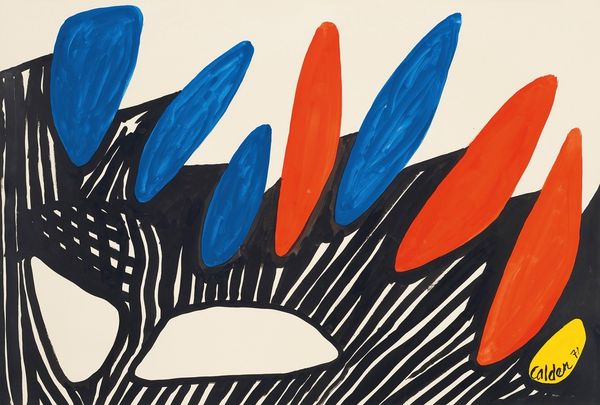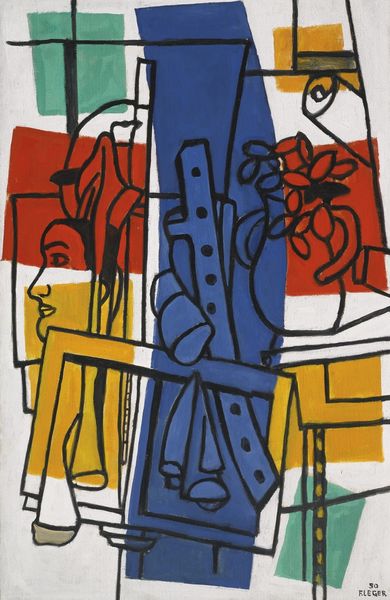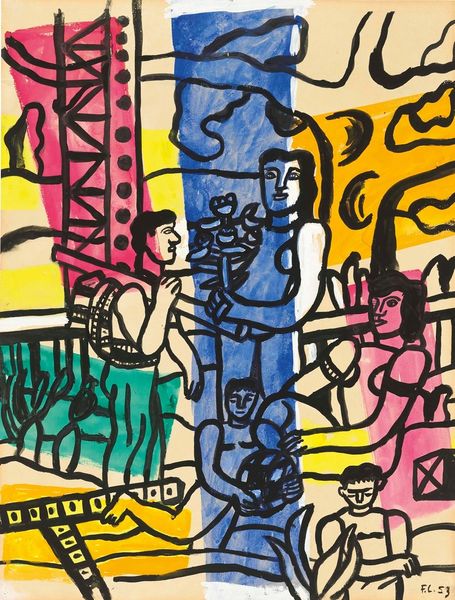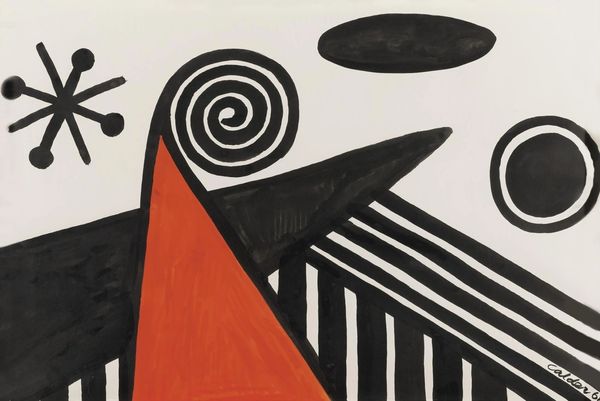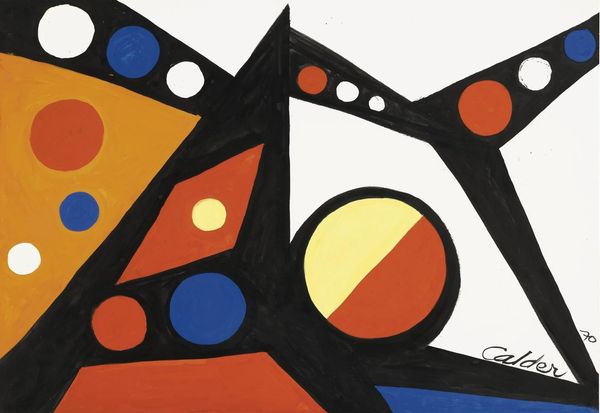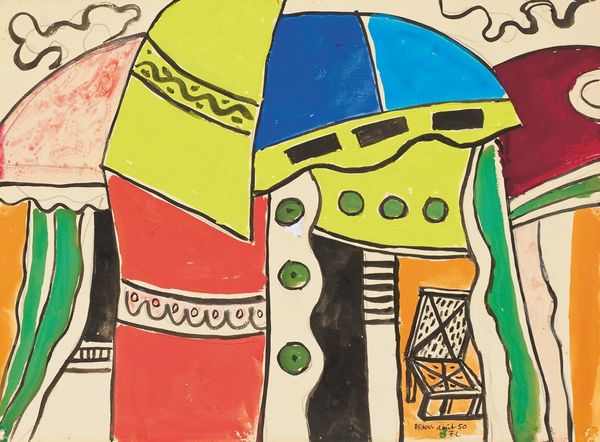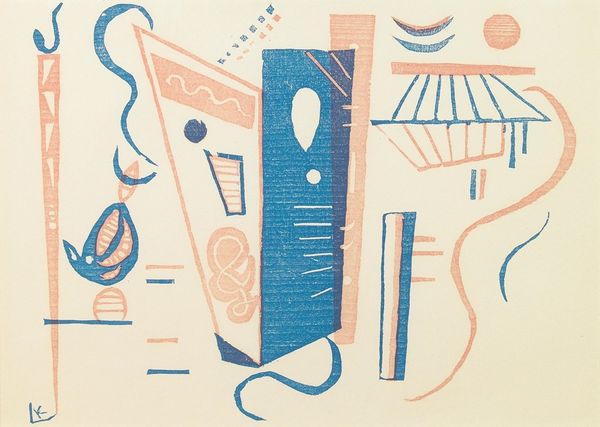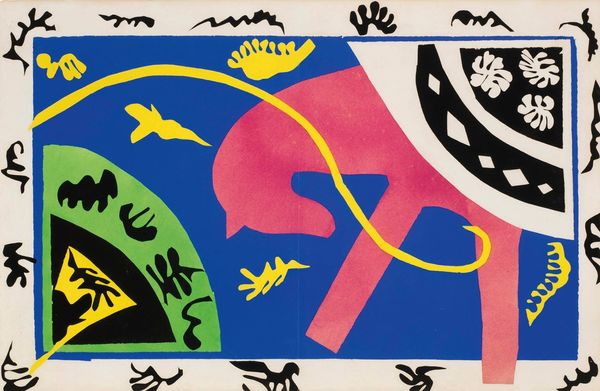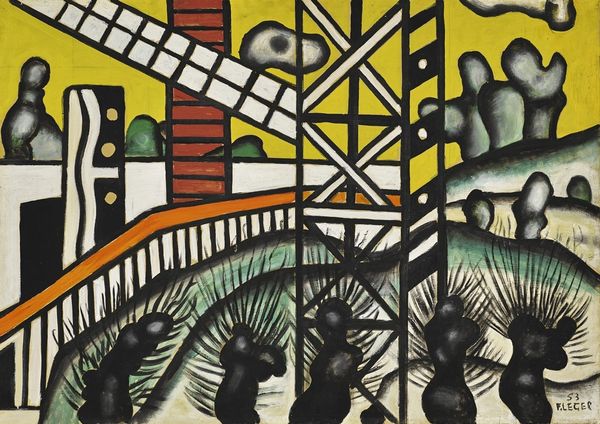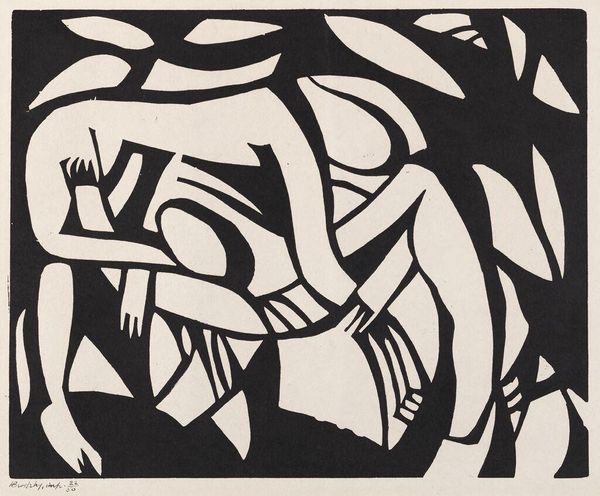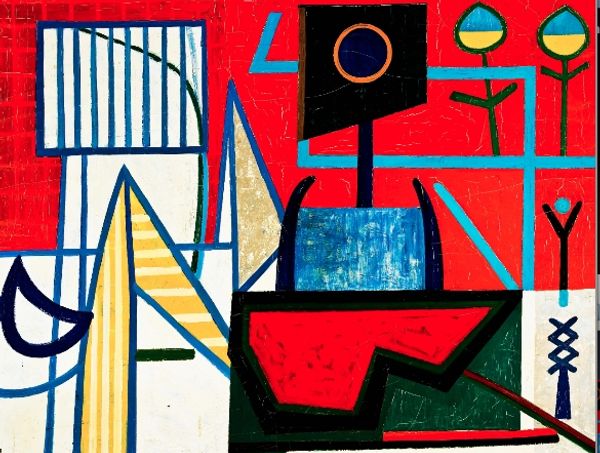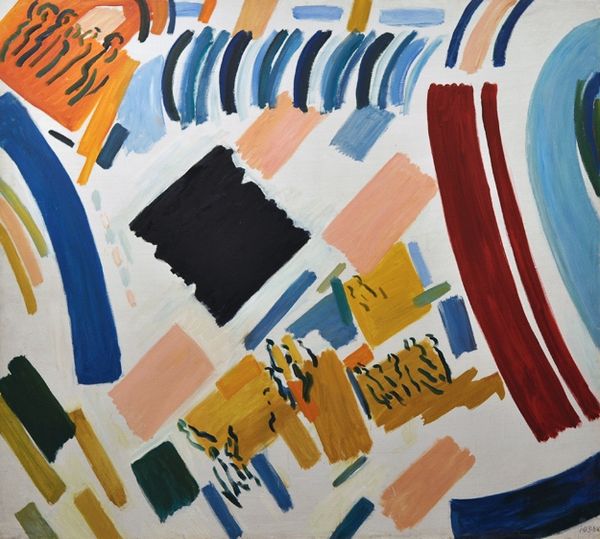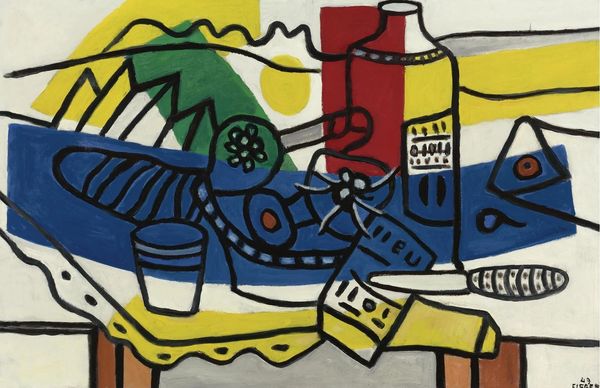
Copyright: Modern Artists: Artvee
Curator: Fernand Léger's 1953 piece, "Deux oiseaux dans les fleurs", which translates to "Two Birds in Flowers," is a delightful explosion of color and form. Editor: It strikes me as almost playfully constructed. There’s a flattened, graphic quality to the shapes – like boldly colored cutouts assembled on a surface. The black outlines are very prominent, which gives it an almost industrial feel mixed with that of a child’s drawing. Curator: That feeling speaks to the post-war optimism that began to take root in France. Léger was very invested in the rebuilding of French society, and saw his art as a way to connect with ordinary people, reflecting the joy he found in everyday life. Notice how the birds and flowers aren’t rendered realistically, but rather as symbolic representations of nature's presence in an industrialized world. Editor: Absolutely. And the simplified forms—the circular leaves, the blocky fence—make it instantly accessible. It’s interesting how he's combined organic forms with these very rigid, geometric shapes. The way the acrylic paint lays so flatly also emphasizes the surface quality. I wonder if that's intended to remove any hierarchy between foreground and background? Curator: You raise an interesting point. Léger championed the idea of "art for all," using a visual language that reflected the mechanization and industrial progress of the 20th century. This ethos permeated his public engagement: designing stained glass for churches, sets for ballets and even collaborating with advertisers. "Deux oiseaux dans les fleurs," with its cheerful palette and simplified imagery, captures his democratic vision. It suggests harmony and connection amidst urban progress. Editor: The very means of its creation - acrylic paints allowing for bright colors and bold outlines on a commercially viable scale, likely also helped that agenda. I do still find it fascinating that this aesthetic that resonates with so much post-war idealism came to be almost indistinguishable from later “Pop Art,” especially through the lens of mass production and distribution. Curator: It is a powerful piece; both for its visual simplicity, and for Léger’s commitment to accessibility and social engagement during a critical juncture in French history. Editor: Agreed. "Deux oiseaux dans les fleurs" truly bridges the gap between industry, art and optimism.
Comments
No comments
Be the first to comment and join the conversation on the ultimate creative platform.
